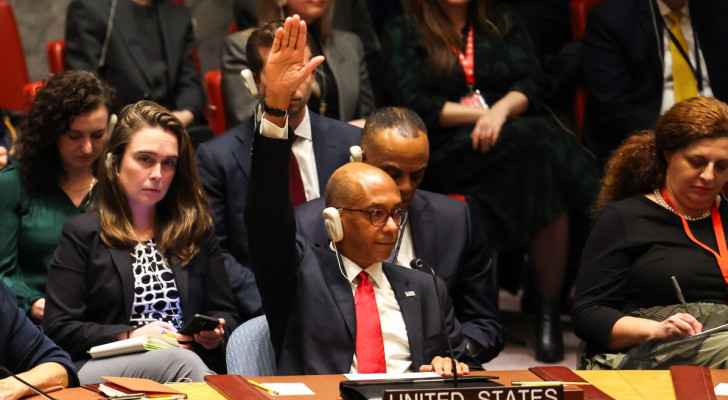ANALYSIS: Why ISIS continues to be a dangerous force in Libya

Giorgio Cafiero, Al Arabiya
US President Donald Trump can point to the fact during the first year of his presidency Washington and its allies – in addition to several of the United States’ adversaries – fighting in Iraq and Syria “liberated” Mosul, Raqqa, and other cities from ISIS.
Although ISIS maintains a presence in Iraq, it has had to transform from functioning as a de facto totalitarian and theocratic state into an extremist insurgent group that plots attacks much like those carried out between 2009 and 2011 by ISIS in Iraq (its own predecessor) in al-Anbar province.
ISIS’s most lethal offshoot outside of the Levant has been in Libya. Yet the heaviest fighting, at least thus far, against ISIS in Libya concluded before Trump’s presidency. ISIS lost its remaining stronghold, Sirte, following intense air and ground attacks waged by Misratan forces – united under the banner of al-Bunyan al-Marsous (BAM – on the ground with US support from the air that concluded while Trump was still President-elect.
Like ISIS’s activities in Iraq following its fall from Mosul last year, however, ISIS in Libya has somewhat similarly transformed itself since December 2016/January 2017. After losing Sirte to BAM fighters, most of ISIS’s members who survived the battle fled to Bani Walid, Ghat, Ubari, and other parts of the country, hiding in valleys.
Membership in ISIS’s Libyan offshoot was, according to the US military’s estimates, roughly 500 in September, down from its peak at 6,000 during 2016. Although with much smaller numbers, last year ISIS fighters formed a “desert army” that has regrouped in central and southern Libya, including areas in close proximity to major Libyan oil fields (al-Bayda, Mabruk, Bahi, and Fida).
Since transforming into a more of an insurgent group, ISIS has set up its own checkpoints, and hijacked and stolen from fuel trucks. Last year, ISIS’s modes of operation relied on strategies such as moving its fighters around at night to escape monitoring and make ground attacks against ISIS more difficult, in addition to travelling in smaller numbers to make ongoing US air strikes against the entity’s fighters and weaponry less efficient.
The civil war
Last year as the Libyan civil war raged on, ISIS waged deadly acts of violence against both competing governments: the UN-recognized Tripoli-based Government of National Accord (GNA) and the Tobruk-based House of Representatives (HoR). On May 7, ISIS attacked Misratan fighters south of Abu Grein.
On October 4, ISIS killed four and wounded dozens in an attack on a courthouse in Misrata, only two months after its fighters killed nine soldiers in Field Marshal Khalifa Haftar’s HoR-allied Libyan National Army (LNA) at a check point in Jufra.
Evidently, the fight against ISIS in Libya is not over. Instead the Libyan struggle against this violent entity has only entered a new chapter. In pointing to a lower membership count and severe losses endured during the battle for Sirte in 2016/2017, analysts have posited that ISIS is unlikely to retake the power that it held in Muammar Qaddafi’s hometown up until 13 months ago.
Regardless of whether such optimism is justified, ISIS has transformed and remains effective amid new realities. In this beleaguered North African country, where lawlessness persists throughout large swathes of territory linking Libya to other countries with porous borders, ISIS retains the ability to play spoiler.
Prospects for political reconciliation
Its fighters’ deadly violence can undermine the prospects for political reconciliation between the GNA and HoR at a time when both governments’ narratives accuse the other of benefitting from ISIS.
Libya would be challenged to fortress itself from transnational terrorist organizations which transit different countries in the region even if there were no civil war and a government of national unity were in power. Thus, to be sure failure on the part of all actors in Libya’s nearly four-year-old civil war to resolve the conflict will offer ISIS new opportunities to reemerge as an increasingly powerful player in post-Qaddafi Libya in the future.
Unquestionably, ISIS’s offshoot in the North African country poses a threat not only to all Libyans and nearby countries including European Union members, but also to global security given the potential for a failed state in Libya to offer ISIS a stronger platform for attacking targets by beyond the Maghreb.
As the Trump administration and US allies along with local partners continue to fight and monitor ISIS in Libya, such counter-terrorism efforts must address the changing nature of ISIS in the chaotic and war-torn country. Albeit dislodged and weakened, ISIS in Libya remains highly relevant and dangerous. It serves no one’s interests to naively conclude that ISIS is finished in Libya.
Latest News
 Safadi, Iranian counterpart discuss war on Gaza, regional escalation
Safadi, Iranian counterpart discuss war on Gaza, regional escalation US vetoes Security Council resolution on full Palestinian UN membership
US vetoes Security Council resolution on full Palestinian UN membership King, Bahrain monarch stress need to maintain Arab coordination
King, Bahrain monarch stress need to maintain Arab coordination Security Council to vote Thursday on Palestinian state UN membership
Security Council to vote Thursday on Palestinian state UN membership Dubai reels from floods chaos after record rains
Dubai reels from floods chaos after record rains
Most Read Articles
- Jordan urges UN to recognise Palestine as state
- Senate president, British ambassador discuss strategic partnership, regional stability
- JAF carries out seven more airdrops of aid into Gaza
- Temperatures to near 40 degree mark next week in Jordan
- Safadi, Iranian counterpart discuss war on Gaza, regional escalation
- US vetoes Security Council resolution on full Palestinian UN membership
- UN chief warns Mideast on brink of ‘full-scale regional conflict’
- Biden urges Congress to pass 'pivotal' Ukraine, Israel war aid
- Google fires 28 employees for protesting $1.2 billion cloud deal with “Israeli” army
- Israeli Occupation strike inside Iran responds to Tehran's provocation, reports say